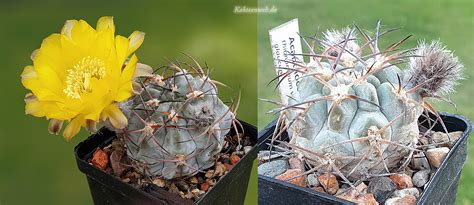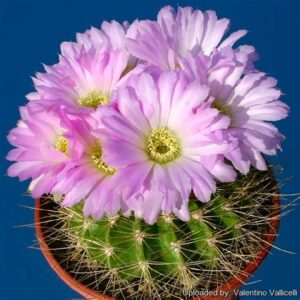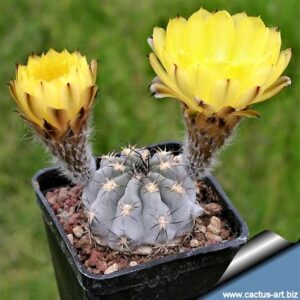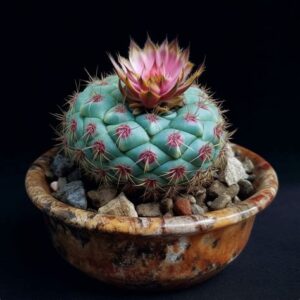Acanthocalycium glaucum P 394 is a notable specimen within the cacti family, cherished for its striking features and resilience. As a succulent of the Cactaceae family, this particular species presents unique challenges and rewards for enthusiasts and cultivators alike. Are you ready to explore the intricate world of this vibrant cactus? Its particular growing habits might just pose a delightful challenge for your gardening dexterity.
When it comes to Acanthocalycium glaucum P 394, it is essential to begin by understanding its origins and morphological characteristics. Originating from the arid landscapes of Argentina, this cactus exhibits a distinctive cylindrical shape adorned with glabrous skin that can range in color from green to a bluish-grey hue. It can grow to about 10 to 25 centimeters in height, with a diameter typically between 5 to 10 centimeters. Notably, its ribs are pronounced, giving it a textured appearance that appeals to many collectors.
In terms of growth, Acanthocalycium glaucum P 394 is known for its remarkable ability to thrive in harsh conditions. This resilience is chiefly attributed to its specialized adaptations that allow it to store water, making it an ideal candidate for drought-prone environments. At full maturity, you may notice the emergence of vibrant pink to magenta flowers, which contrast beautifully against its earthy skin tones. These blossoms tend to form around the crown of the cactus and can bloom in late spring to early summer, adding a splash of color to your cactus collection.
Understanding the environmental needs of Acanthocalycium glaucum P 394 is paramount for successful cultivation. It prefers bright, direct sunlight, making it essential to choose a planting location that mimics its natural habitat. However, exposure to harsh, unfiltered sun for extended periods can lead to sunburn on its delicate surface. Balance is crucial; thus, providing it with ample light during the day while avoiding excessive afternoon sun exposure is advisable.
So, how do you create the perfect environment for Acanthocalycium glaucum P 394? Begin by selecting a suitable potting mix enriched with excellent drainage properties. A blend of cactus soil and perlite or coarse sand works superbly to prevent water retention. Furthermore, ensuring that your pot has ample drainage holes is crucial; standing water can lead to root rot and other detrimental outcomes.
Watering practices are central to the healthy growth of Acanthocalycium glaucum P 394. During the active growing season, typically from spring through summer, it requires more frequent watering. Allow the soil mix to dry out completely between watering sessions, which not only mimics its native environment but also helps prevent overwatering. Conversely, during the fall and winter months, reduce watering significantly as the cactus enters its dormancy phase. It’s during this time when the plant should generally be kept drier, further simulating the natural cycles found in its native ecology.
Fertilization is another critical aspect of maintaining the vigor of Acanthocalycium glaucum P 394. While these cacti are relatively low-maintenance, a diluted, water-soluble cactus fertilizer can be applied during the growing season. This practice promotes growth and enhances the development of those vibrant flowers. Feed the plant once a month during its active growth period, and avoid fertilizing during its dormancy to prevent unnecessary strain.
However, despite its resilience, Acanthocalycium glaucum P 394 is not impervious to pests and diseases. Common adversaries include mealybugs, spider mites, and fungus gnats. Regularly inspecting your cactus for signs of infestation is crucial. Should you discover these unwanted guests, removing them promptly with a cotton swab dipped in rubbing alcohol can mitigate potential damage. Additionally, providing good airflow around your plants and avoiding excess humidity can help stave off unwanted fungal issues.
Let’s not overlook the fact that Acanthocalycium glaucum P 394 is a partial self-fertilizing cactus, meaning it can produce seeds without the need for cross-pollination in some cases. This characteristic can make propagation straightforward for the diligent cultivator. Seeds can be collected from mature flowers once they have dried out, making propagation an engaging activity. These seeds can be cultivated in a similar manner to the adult plant, provided with the correct environmental conditions and attention.
Equally intriguing is the matter of its adaptability to various container types. While terracotta pots are often preferred for their breathability and drainage capabilities, many cultivators find that ceramic or plastic pots can also be effective. Each pot type holds unique characteristics; for instance, terracotta absorbs moisture, affecting the drying out process, while plastic pots retain more moisture. Therefore, select a pot type that aligns with your water retention strategy to promote optimal growth.
As this cactus reaches maturity, propagation becomes a feasible consideration. Offsets or pups may form at the base of the plant, and these can be carefully separated from the mother plant to enhance your collection. Using a clean, sharp tool, cut off these offsets, allowing them to callous for a few days before potting them in fresh, dry soil. This process mirrors natural propagation in the wild and contributes to cultivating a robust cactus environment.
Aesthetics play a significant role in the allure of Acanthocalycium glaucum P 394. Its willowy stature and radiant blooms create an eye-catching feature in any garden or indoor display. By mixing this striking cactus with other succulents or contrasting green foliage, you can create a stunning arrangement that showcases their unique characteristics. Placing it in a decorative pot can further enhance its visual appeal, turning your cactus cultivation endeavor into an expression of creativity.
In conclusion, the Acanthocalycium glaucum P 394 offers both a rewarding and stimulating challenge for plant enthusiasts. Its dazzling appearance, coupled with its need for specific care techniques, makes it a fascinating subject for both novice and seasoned growers. While establishing the correct growing environment, mastering watering techniques, and managing pests prove essential for nurturing this beautiful species, the effort reaps substantial aesthetic rewards.
As you embark on your journey with Acanthocalycium glaucum P 394, consider the joys and hurdles that may arise. Will you cultivate a thriving specimen that adorns your space, or will you occasionally grapple with its peculiarities? The answers lie in your dedication to understanding and mastering the nuances of this extraordinary cactus species. Each experience contributes to your growing expertise, making the connection even more valuable and rewarding.





Leave a Comment